Perhaps you've noticed that your lime tree grows beautiful blossoms. You're excited for the fruits to grow, but none develop. You may wonder why this is happening. Is the lime tree not growing accordingly? Are you doing something wrong? We researched to shed light on your predicament.
Your lime tree may fail to bear fruit for either of the following reasons:
- The age of your lime tree
- Not enough nourishment
- Not enough sun exposure
- Very little water
- Too much water
- Too much pruning
- Not enough pollination
We will explain in greater detail each of the mentioned reasons to help you understand why your lime tree does not bear fruit and what you can do better. In addition, we provided tips and solutions to counter the problems, so keep reading to learn more!
Why Is Your Lime Tree Blossoming but Not Bearing Fruit?
Fruit trees filled with blossoms but not fruits are a common occurrence. Lemon trees, a part of the lime tree family, also share the same issue. But why does this happen? Luckily, your lime tree isn't dying or barren; it just needs more attention.
Your lime tree can fail to produce fruits due to one or more of the issues we address in the following section.
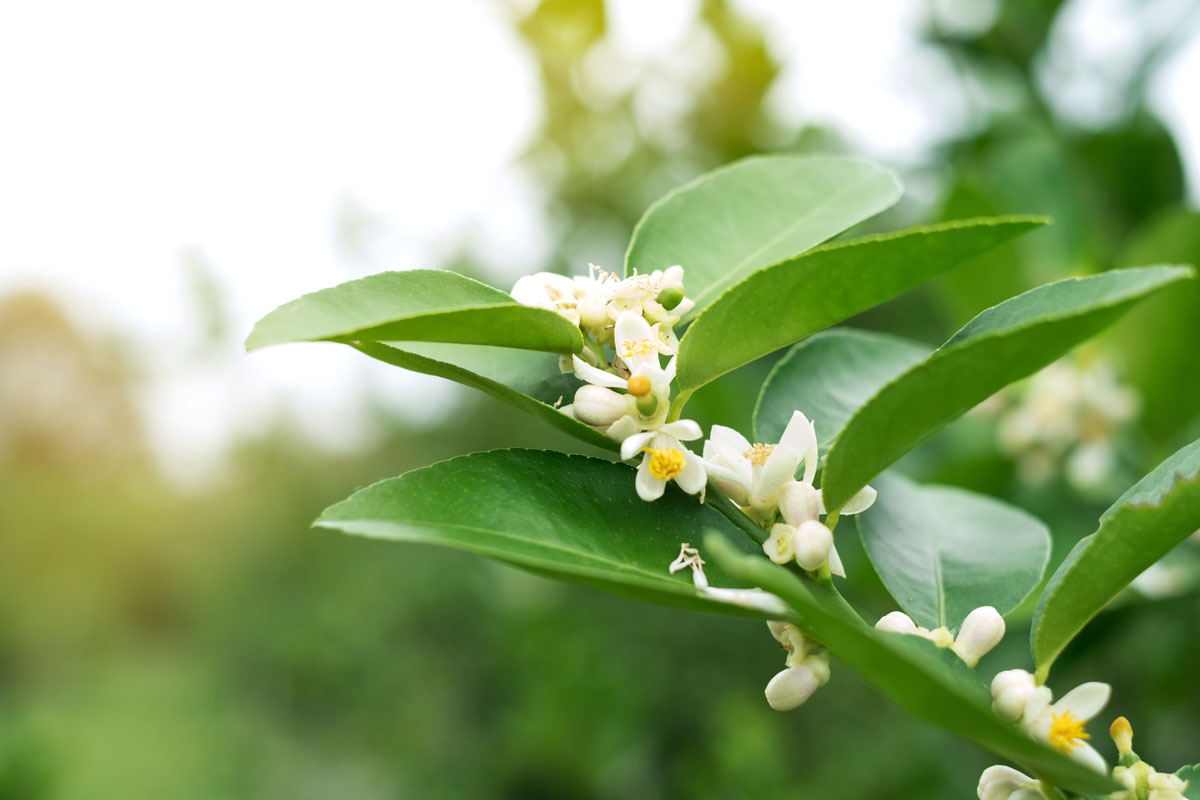
The age of your lime tree
Your lime tree may be a bit too young to produce fruit. Lime trees typically grow fruit 1-3 years after planting. Therefore, if your lime tree is very young, don't expect it to bear fruit.
Although the only solution here is to be patient, you can still do something to make the tree healthier and produce as many healthy limes as possible. Once your lime tree starts bearing fruit, the harvest will increase significantly yearly.
Not Nourished Enough
Plants need enough nourishment to reach their full potential. Even at a young age, when lime trees are not producing fruits, it's vital to give attention to them and provide proper nourishment.
Lime trees need a lot of nitrogen to grow healthy leaves and stems. Additionally, potassium spurs growth.
You can fix a lack of fruit from insufficient nourishment by adding a fertilizer strong in potassium, nitrogen, and phosphorus. Simply look for a fertilizer that promotes growth in both flowers and fruit.
Alternatively, you can use a few things from the shelf as fertilizer, such as:
- Epsom salt
- Coffee grounds
If you notice that your lime tree leaves are yellow and the stems are a darker green, your lime tree isn't getting as much magnesium as it needs. You can dissolve magnesium in water and feed it to your tree. You can also use Epsom salt since it contains magnesium, which effectively treats magnesium deficiency.
Check out this bag of Epsom salt on Amazon.
If you regularly brew coffee and throw out the remaining coffee grounds, you might want to break that habit. Coffee grounds are of great nutritional value to your lime tree. They contain phosphorus, nitrogen, magnesium, and even copper.
Spread the coffee grounds directly into the soil to nourish the tree and increase your chances of a bountiful harvest later.
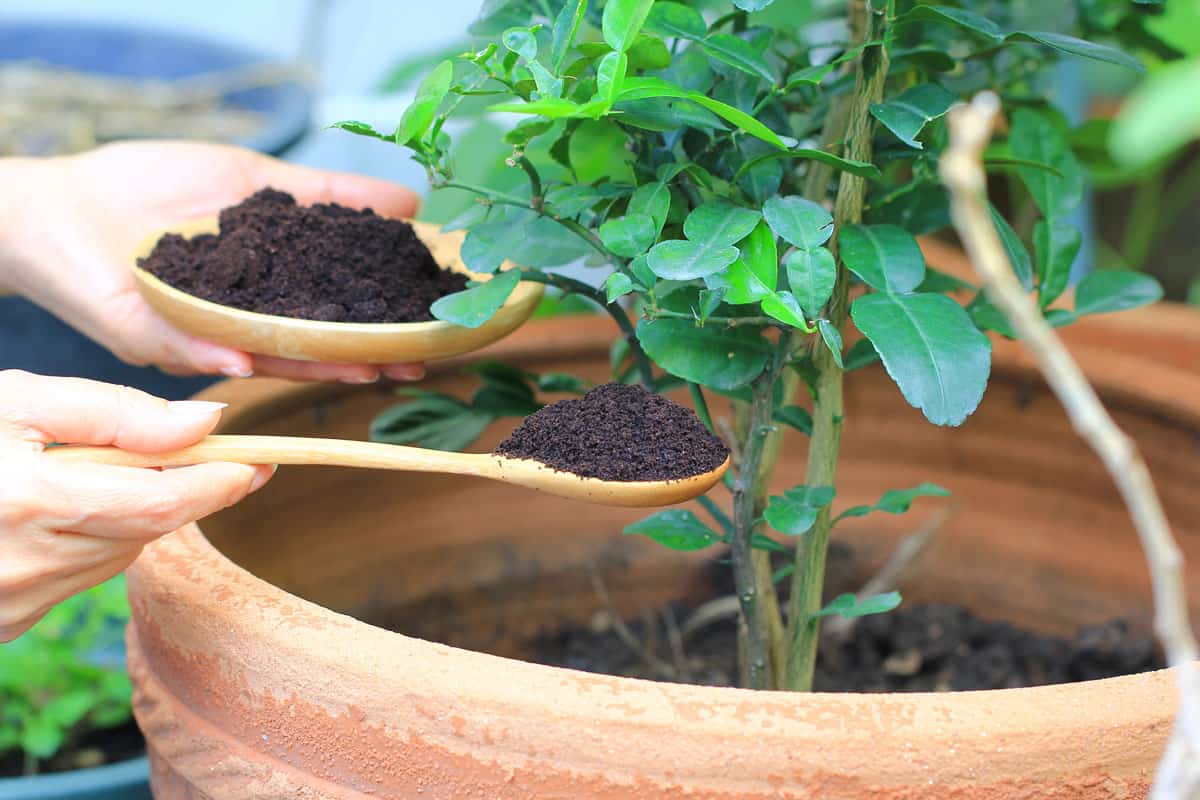
Too Little Water
If you leave your trees dry for too long, they will eventually die. That said, having a consistent hydration routine for your lime trees is important.
Dry roots are the biggest concern when you don't water your trees regularly. Also, the leaves will fall rapidly. To avoid this, hydrate your trees more often in the warmer season.
To know whether your lime tree needs more watering, check 6 inches below the soil's surface. If it's too dry, add water. Do this regularly each week until the soil is fully hydrated.
Too Much Water
Having too much water is just as much of a problem as having too little water. Do not dump too much water into the plant - lime trees can be a little tricky with hydration. But the key to maintaining them is feeling the soil; don't let it dry or become soggy with water.
Not Enough Sun Exposure
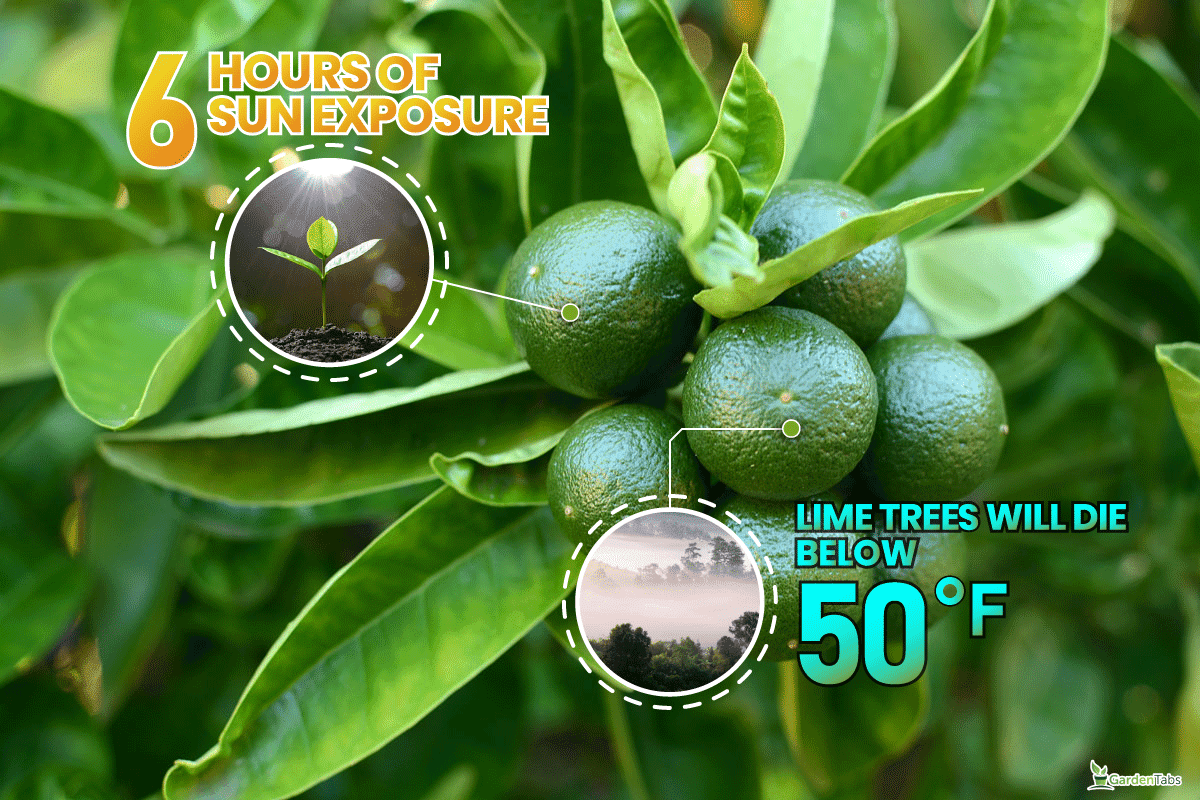
Like any other plant or tree, your lime tree needs sufficient sun exposure to grow. Do not plant in an area with little to no sun. Instead, place your lime tree where the sun rays can reach it and ensure that it gets at least 6 hours of sun exposure.
You can use light reflectors to solve problems linked to very little sun exposure.
The lime tree will most likely die if the temperature is not tolerable. Lime trees won't be able to live if temperatures are colder than 50°F.
Too Much Pruning
If you notice that the lime tree branches are too long, you probably want to give them a trim. But too much pruning can have its downsides. Therefore, it's important to know where and how you should trim. Otherwise, it will be hard for your lime tree to grow fruits if you cut many branches and stems.
Use sharp pruning shears when pruning lime trees and only trim the branches that overlap each other, and do not remove any stem tips.
Read this post, "Can You Kill A Fruit Tree By Over Pruning?" to have more insight about over-pruning your lime tree.
Check out this set of pruning shears on Amazon
Not Enough Pollination
Unlike most fruit trees, lime trees self-pollinate, which means that even a single tree can bear fruits. This is because of how the flowers are constructed.
There are several ways for lime trees to be pollinated. These include wind, bees and insects, and hand pollination.
Pollination is likely when your lime trees are placed outdoors and in the open. The pollens will be moved from one flower to another, causing fruit growth. Plant your lime trees in the open without any obstruction for wind pollination to be successful.
Pollination is not only limited to bees; insects such as wasps and beetles can also pollinate. These insects can do the job as long as the tree has enough blossoms or lots of flowers surrounding it.
The insects fly from one blossom to another, transporting the pollen from flower to flower as they collect more nectar. The more pollen, the more the flowers pollinate. And the more pollination, the more fruits will grow.
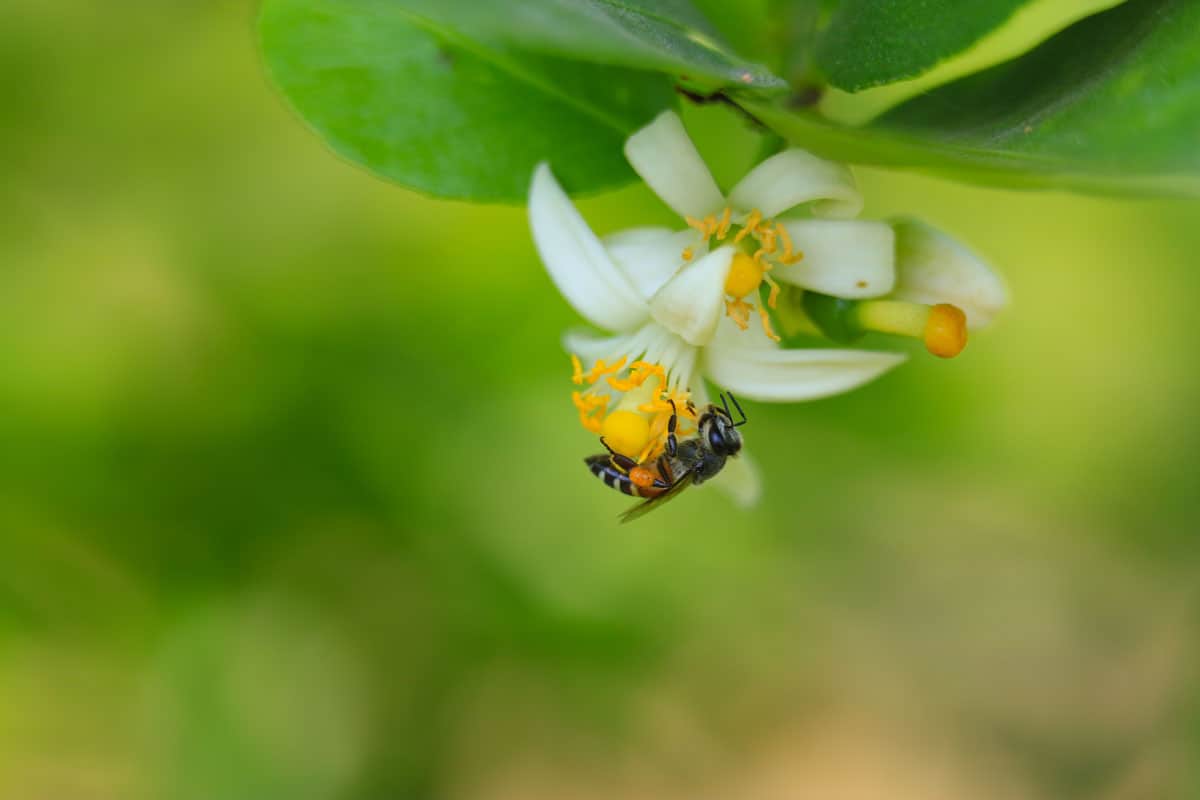
Hand pollination is a common practice for indoor lime trees and is pretty easy to do. If you don't have enough space outdoors, you can give this a try. All you need is a brush. Locate the yellow pollen sticking out of the blossom and glide your brush to collect it. Brush it with another flower to boost pollination.
Once you're done, leave it for a week until the blossom curls up and reveals a small fruit in the middle.
What Time Of The Year Do Lime Trees Produce Fruits?
Lime trees fruit during the summer, although in some areas, green limes can be harvested throughout the year.
What Is The Lifespan Of A Lime Tree?
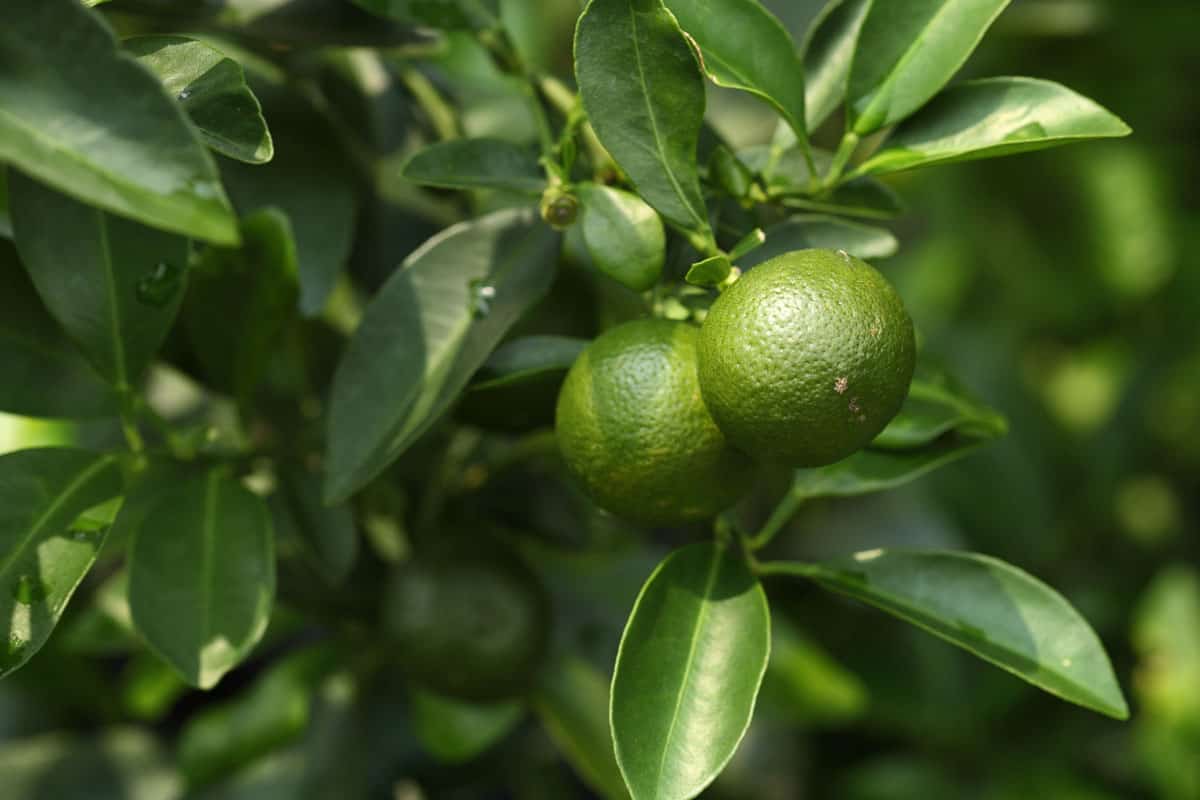
Lime trees generally have a lifespan of 50 years. If you take good care of your lime trees and provide them with the right amount of hydration and heat, they can last for over a hundred years.
How Do You Know If A Lime Tree Has Root Rot?
A rotting lime tree has dull-looking leaves, peeling roots, and dry twigs. If you notice these symptoms in your lime tree, you can still try to bring it back to life. But in most cases, the tree may be rotting from the inside out.
In Conclusion
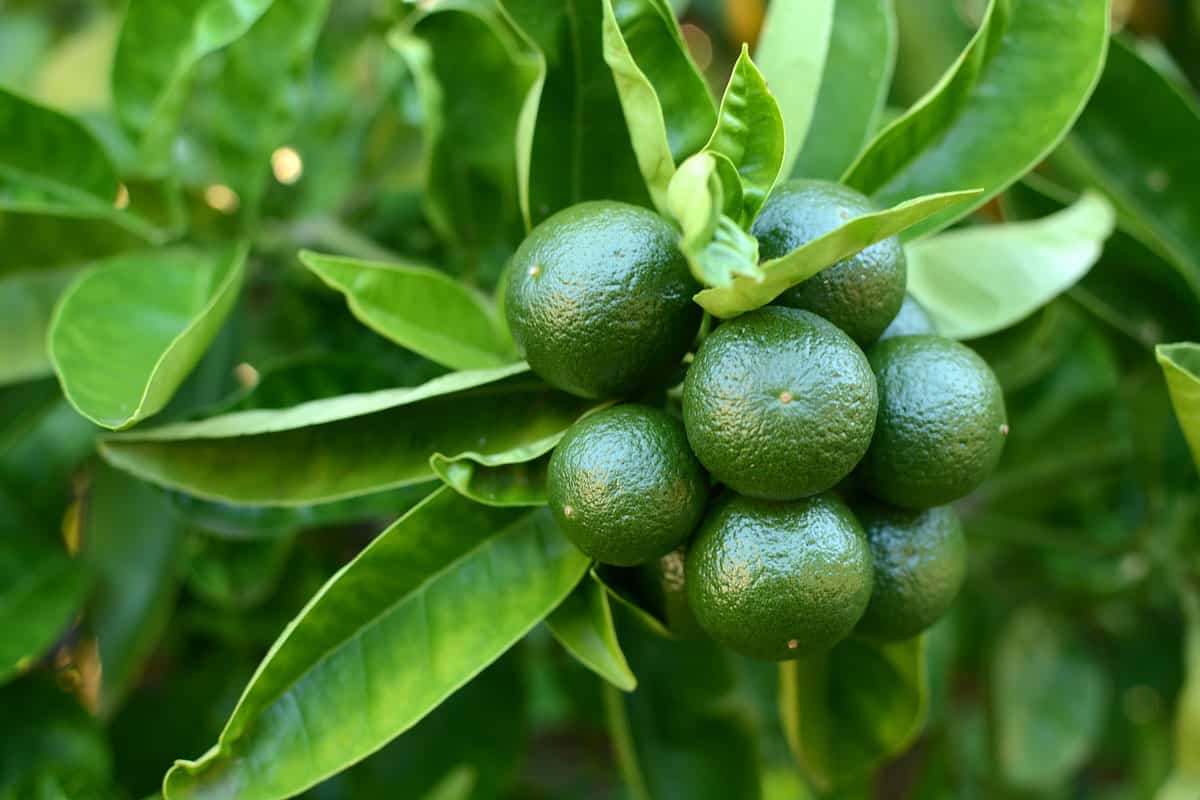
Remember that patience is key with lime trees. It may seem like your efforts aren't bearing any fruit, but after some time, your lime trees will shower you with lots of fruits.
Keep your lime trees healthy and invest in a good source of nutrients to ensure your lime tree's growth.
We hope that this guide helped solve your concerns!
If you'd like to learn more about using Epsom salt in your garden, read this post, "When To Apply Epsom Salt To Lawn [And How To]."


